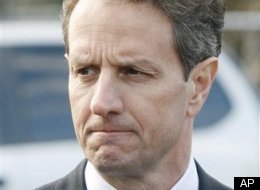By Craig Torres
March 20 (Bloomberg) — The Federal Reserve Board removed an exemption it had given to six banks at the start of the crisis in 2007 aimed at boosting liquidity in financing markets for securities backed by mortgage- and asset-backed securities.
The so-called 23-A exemptions, named after a section of the Federal Reserve Act that limits such trades to protect bank depositors, were granted days after the Fed cut the discount rate by half a percentage point on Aug. 17, 2007. Their removal, announced yesterday in Washington, is part of a broad wind-down of emergency liquidity backstops by the Fed as markets normalize.
The decision in 2007 underscores how Fed officials defined the mortgage-market disruptions that year as partly driven by liquidity constraints. In hindsight, some analysts say that diagnosis turned out to be wrong.
“It was a way to prevent further deleveraging of the financial system, but that happened anyway,” said Dino Kos, managing director at Portales Partners LLC and former head of the New York Fed’s open market operations. “The underlying problem was solvency. The Fed was slow to recognize that.”
The Fed ended the exemptions in nearly identical letters to the Royal Bank of Scotland Plc, Bank of America Corp., Citigroup Inc., JPMorgan Chase & Co., Deutsche Bank AG, and Barclays Bank Plc posted on its Web site.
Backstop Liquidity
The Fed’s intent in 2007 was to provide backstop liquidity for financial markets through the discount window. In a chain of credit, investors would obtain collateralized loans from dealers, dealers would obtain collateralized loans from banks, and then banks could pledge collateral to the Fed’s discount window for 30-day credit. In Citigroup’s case, the exemption allowed such lending to its securities unit up to $25 billion.
“The goal was to stop the hemorrhaging of risk capital,” said Lou Crandall, chief economist at Wrightson ICAP LLC in Jersey City, New Jersey. “Investors were being forced out of the securities market because they couldn’t fund their positions, even in higher-quality assets in some cases.”
Using mortgage bonds without government-backed guarantees as collateral for private-market financing began to get more difficult in August 2007 following the collapse of two Bear Stearns Cos. hedge funds.
As terms for loans secured by mortgage bonds got “massively” tighter, haircuts, or the excess in collateral above the amount borrowed, on AAA home-loan securities rose that month from as little as 3 percent to as much as 10 percent, according to a UBS AG report.
Lehman Collapse
By February 2008, haircuts climbed to 20 percent, investor Luminent Mortgage Capital Inc. said at the time. After Lehman Brothers Holdings Inc. collapsed in September 2008, the loans almost disappeared.
“These activities were intended to allow the bank to extend credit to market participants in need of short-term liquidity to finance” holdings of mortgage loans and asset- backed securities, said the Fed board’s letter dated yesterday to Kathleen Juhase, associate general counsel of JPMorgan. “In light of this normalization of the term for discount window loans, the Board has terminated the temporary section 23-A exemption.”
The “normalization” refers to the Fed’s reduction in the term of discount window loans to overnight credit starting two days ago from a month previously.
The Fed eventually loaned directly to securities firms and opened the discount window to primary dealers in March 2008. Borrowings under the Primary Dealer Credit Facility soared to $146.5 billion on Oct. 1, 2008, following the collapse of Lehman Brothers two weeks earlier. Borrowings fell to zero in May 2009. The Fed closed the facility last month, along with three other emergency liquidity backstops.
Discount Rate
The Fed also raised the discount rate a quarter point in February to 0.75 percent, moving it closer to its normal spread over the federal funds rate of 1 percentage point.
The one interest rate the Fed hasn’t changed since the depths of the crisis is the benchmark lending rate. Officials kept the target for overnight loans among banks in a range of zero to 0.25 percent on March 16, where it has stood since December 2008, while retaining a pledge to keep rates low “for an extended period.”
Removing the 23-A exemptions shows the Fed wants to get “back to normal,” said Laurence Meyer, a former Fed governor and vice chairman of Macroeconomic Advisers LLC in Washington. “Everything has gone back to normal except monetary policy.”
To contact the reporters on this story: Craig Torres in Washington at ctorres3@bloomberg.net
Last Updated: March 20, 2010 00:00 EDT










Recent Comments